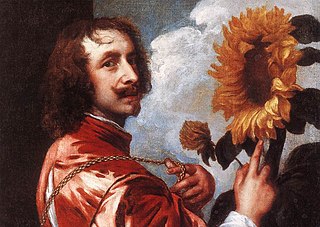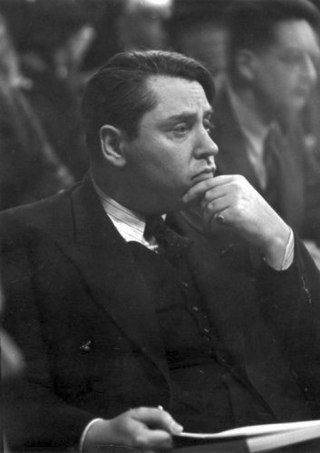Aelbert Jacobszoon Cuyp or Cuijp was one of the leading Dutch Golden Age painters, producing mainly landscapes. The most famous of a family of painters, the pupil of his father, Jacob Gerritszoon Cuyp (1594–1651/52), he is especially known for his large views of Dutch riverside scenes in a golden early morning or late afternoon light. He was born and died in Dordrecht.

Jan Josephszoon van Goyen was a Dutch landscape painter. The scope of his landscape subjects was very broad as he painted forest landscapes, marine paintings, river landscapes, beach scenes, winter landscapes, cityscapes, architectural views and landscapes with peasants. The list of painters he influenced is much longer. He was an extremely prolific artist who left approximately twelve hundred paintings and more than one thousand drawings.

Jan Havickszoon Steen was a Dutch Golden Age painter, one of the leading genre painters of the 17th century. His works are known for their psychological insight, sense of humour and abundance of colour.

Sir Anthony van Dyck was a Flemish Baroque artist who became the leading court painter in England after success in the Spanish Netherlands and Italy.

Carel Pietersz. Fabritius was a Dutch painter. He was a pupil of Rembrandt and worked in his studio in Amsterdam. Fabritius, who was a member of the Delft School, developed his own artistic style and experimented with perspective and lighting. Among his works are A View of Delft, The Goldfinch (1654), and The Sentry (1654).

Willem van de Velde the Younger was a Dutch marine painter, the son of Willem van de Velde the Elder, who also specialised in maritime art. His brother, Adriaen van de Velde, was a landscape painter.

Salomon van Ruysdael was a Dutch Golden Age landscape painter. He was the uncle of Jacob van Ruisdael.

Jacob Isaackszoon van Ruisdael was a Dutch painter, draughtsman, and etcher. He is generally considered the pre-eminent landscape painter of the Dutch Golden Age, a period of great wealth and cultural achievement when Dutch painting became highly popular.

Abraham Bloemaert was a Dutch painter and printmaker who used etching and engraving. He initially worked in the style of the "Haarlem Mannerists", but by the beginning of the 17th-century altered his style in line with the new Baroque style that was then developing. He mostly painted history subjects and some landscapes. He was an important teacher, who trained most of the Utrecht Caravaggisti.

Anthonij "Anton" Rudolf Mauve was a Dutch realist painter who was a leading member of the Hague School. He signed his paintings 'A. Mauve' or with a monogrammed 'A.M.'. A master colorist, he was a very significant early influence on his cousin-in-law Vincent van Gogh.

Bartholomeus van der Helst was a Dutch painter. Considered to be one of the leading portrait painters of the Dutch Golden Age, his elegant portraits gained him the patronage of Amsterdam's elite as well as the Stadtholder's circle. Besides portraits, van der Helst painted a few genre pictures as well as some biblical scenes and mythological subjects.

The Rijksmuseum Twenthe in Enschede, the Netherlands, was founded in 1927 by textile industry Baron Jan Bernard Van Heek. He donated his own private collection and the museum building to the government, thus making it a national museum. The museum is situated in the quarter of Roombeek, 10 minutes on foot north-east from the railway station.
Events from the year 1649 in art.

Jacques Goudstikker was a Jewish Dutch art dealer who fled the Netherlands when it was invaded by Nazi Germany during World War II, leaving three furnished properties and an extensive and significant art collection including over 1200 paintings, many of which had been previously catalogued as "Old Masters". The entire collection, which had been surveyed by Hermann Goering himself, was subsequently looted by the Nazis. Between the two World Wars, Jacques Goudstikker had been the most important Dutch dealer of Old Master paintings, according to Peter C. Sutton, executive director and CEO of the Bruce Museum of Arts and Science. Despite efforts of Goudstikker's widow after the war to regain possession of the collection, it was not until after her death that the Dutch government finally restituted 202 paintings to the Goudstikker family in 2006. To finance efforts to reclaim more of the stolen art, a large portion of them were sold at auction in 2007 for almost $10 million.
120 Paintings from the Rijksmuseum is a selection of paintings that were included in a booklet of illustrations in the Rijksmuseum Amsterdam giftshop for visitors during the years 1950–1990. It was meant as an illustrated companion guide to the catalog of the paintings on show, which included information about the +/-1,200 paintings on show. The painting River Landscape with Ferry by Salomon van Ruysdael was part of the collection of Jacques Goudstikker and was restituted to his heir in 2006. It is now in the collection of the National Gallery of Art. Various other paintings were on long-term loan from the Amsterdam Museum and have been returned, but the majority are all still in the collection of the Rijksmuseum today. Some of the paintings have been reattributed to other artists since 1956. No works by women artists were included in the selection.

Tobias and Sarah in Prayer with the Angel Raphael and the Demon is an oil-on-canvas painting by the Dutch Golden Age painter Jan Steen. It is now in the collection of the Bredius Museum, The Hague.

Ferry near Gorinchem is a mid 17th century painting by Dutch artist Salomon van Ruysdael. Done in oil on canvas, the work depicts a riverside embankment near Gorinchem in the Netherlands; in addition, the painting also depicts the prominent St Jan's Tower of the Grote Kerk, the town's church. Ruysdael's rendering of the land near Gorinchem was possibly impacted due to the artist's owning of a mill on the river. The work is in the collection of the Metropolitan Museum of Art.

The 2006 Goudstikker restitution of 202 paintings is a binding decision by the Dutch Ministry of Culture on a WWII restitution case between the heirs of Jacques Goudstikker and the agency in charge of the Dutch National art collection. The 202 paintings are just a fraction of the property once owned by Goudstikker that was seized during the German occupation in 1940. After post-war discovery in Germany of much of the collection, it was returned to the Dutch State by the Monuments Men but despite repeated attempts by Goudstikker's widow, never given back to the heirs. To finance further recovery activities through provenance research, much of the 2006 group of paintings have since been sold by the Goudstikker heirs, and a few were bought back by the Dutch State. See Jacques Goudstikker for more information about his collection.

Many priceless artworks by the Dutch post-impressionist artist Vincent van Gogh were looted by Nazis during 1933–1945, mostly from Jewish collectors forced into exile or murdered.
The Netherlands Art Property Collection is an art collection of recovered works of art that accrued to the Dutch state after World War II. This concerns works of art that were looted by the Nazi regime in the Netherlands or were purchased under duress or otherwise. The collection is managed by the Cultural Heritage Agency and is part of the national collection. The works may be on loan from Dutch museums or government buildings, and some are also stored in depots.



















